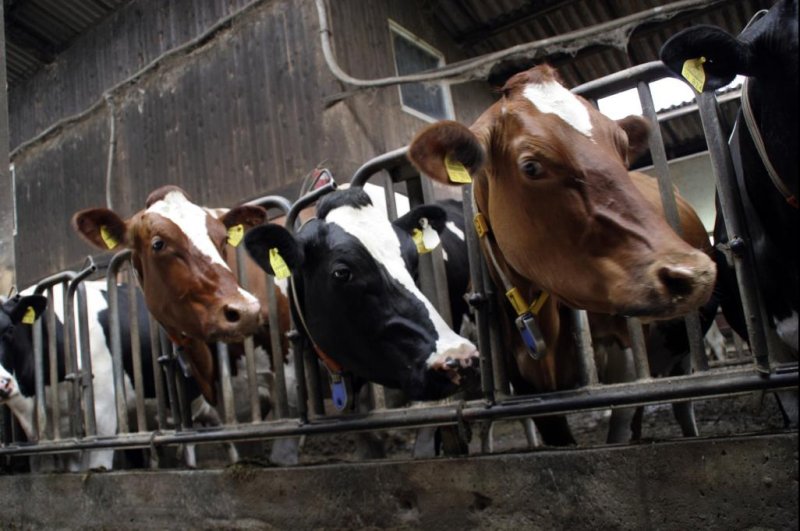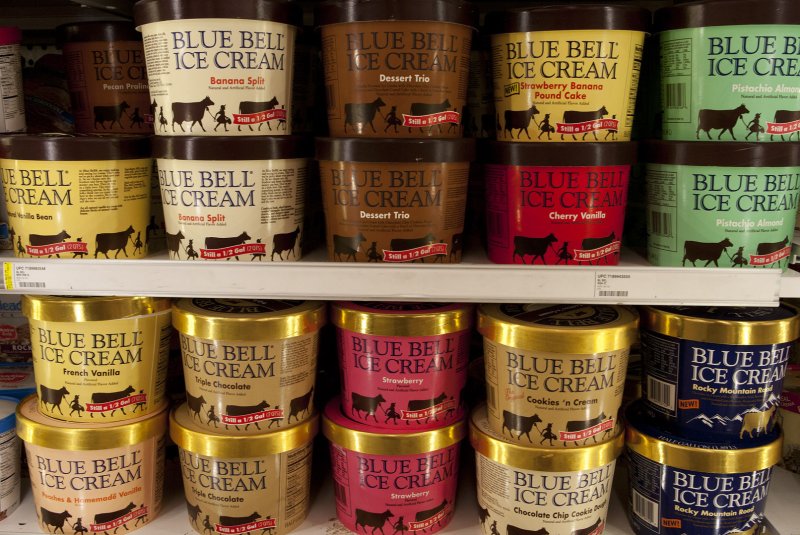BY KAYLEN SMALL , ADAM MACVICAR AND MELISSA GILLIGAN
GLOBAL NEWS Updated May 4, 2020

https://globalnews.ca/video/rd/131020b8-8e34-11ea-ae19-0242ac110005/?jwsource=cl
WATCH: Monday was Day 1 for Cargill's plan to reopen the meat processing plant near High River. As Doug Vaessen reports, the union representing workers was out in full force, protesting the move and demanding the plant stay closed until it's convinced it's safe for workers.
The Cargill meat-packing plant in High River, Alta., has reopened as discussions continue between the company and the union representing its employees.
The plant closed temporarily on April 20 due to an outbreak of COVID-19, and reopened on Monday with health measures like temperature checks, mandatory face masks and other protective equipment, enhanced sanitizing and increased physical distancing.
READ MORE: Legal action launched to stop Monday opening of Cargill meat plant in High River
On Friday, United Food and Commercial Workers (UFCW) Local 401 — the union representing Cargill workers — filed legal action to stop the planned reopening.
Both sides have been in mediation since Saturday, and those talks continued Sunday evening.
As of Sunday, Alberta Health said there are 935 cases of COVID-19 among workers at the Cargill plant in High River and 1,538 cases that have been linked to the facility.

Union representing Cargill workers speaks amid ongoing discussions
https://globalnews.ca/video/rd/ac1e2674-8e07-11ea-891f-0242ac110003/?jwsource=cl

https://globalnews.ca/video/rd/131020b8-8e34-11ea-ae19-0242ac110005/?jwsource=cl
WATCH: Monday was Day 1 for Cargill's plan to reopen the meat processing plant near High River. As Doug Vaessen reports, the union representing workers was out in full force, protesting the move and demanding the plant stay closed until it's convinced it's safe for workers.
The Cargill meat-packing plant in High River, Alta., has reopened as discussions continue between the company and the union representing its employees.
The plant closed temporarily on April 20 due to an outbreak of COVID-19, and reopened on Monday with health measures like temperature checks, mandatory face masks and other protective equipment, enhanced sanitizing and increased physical distancing.
READ MORE: Legal action launched to stop Monday opening of Cargill meat plant in High River
On Friday, United Food and Commercial Workers (UFCW) Local 401 — the union representing Cargill workers — filed legal action to stop the planned reopening.
Both sides have been in mediation since Saturday, and those talks continued Sunday evening.
As of Sunday, Alberta Health said there are 935 cases of COVID-19 among workers at the Cargill plant in High River and 1,538 cases that have been linked to the facility.

Union representing Cargill workers speaks amid ongoing discussions
https://globalnews.ca/video/rd/ac1e2674-8e07-11ea-891f-0242ac110003/?jwsource=cl
READ MORE: NDP demands inquiry into Alberta meat plant COVID-19 protocols as Cargill plans reopening
In a statement to Global News, Cargill said that the safety of its employees is its “top priority” and it is “engaging in good faith” with the union.
Cargill said that Alberta Health Services and Occupational Health and Safety have reviewed its safety measures and support its reopening.
“We care about our employees and are working around the clock to keep them safe, deliver food for local families and provide market access for ranchers,” Cargill said.
READ MORE: Alberta meat plant should slow production to avoid more COVID-19 outbreaks: union head
Cargill had said on Sunday it was not planning on publicly sharing if it would open on Monday as mediation continued.
However, speaking to Global News Morning Calgary on Monday at 6 a.m., UFCW Local 401 president Thomas Hesse said shifts were set to begin that morning but that many employees wouldn’t be returning.
“In Alberta, each individual worker has the right to refuse work that they reasonably believe to be dangerous,” Hesse explained. “Workers aren’t showing up to work, and there’s no surprise in that. Unless Cargill cleans up their act, people aren’t going to buy beef and people aren’t going to work in their plant.
“We’re not on strike and we’re not asking people not to go to work. We’re demanding that the plant be safe.
In a statement to Global News, Cargill said that the safety of its employees is its “top priority” and it is “engaging in good faith” with the union.
Cargill said that Alberta Health Services and Occupational Health and Safety have reviewed its safety measures and support its reopening.
“We care about our employees and are working around the clock to keep them safe, deliver food for local families and provide market access for ranchers,” Cargill said.
READ MORE: Alberta meat plant should slow production to avoid more COVID-19 outbreaks: union head
Cargill had said on Sunday it was not planning on publicly sharing if it would open on Monday as mediation continued.
However, speaking to Global News Morning Calgary on Monday at 6 a.m., UFCW Local 401 president Thomas Hesse said shifts were set to begin that morning but that many employees wouldn’t be returning.
“In Alberta, each individual worker has the right to refuse work that they reasonably believe to be dangerous,” Hesse explained. “Workers aren’t showing up to work, and there’s no surprise in that. Unless Cargill cleans up their act, people aren’t going to buy beef and people aren’t going to work in their plant.
“We’re not on strike and we’re not asking people not to go to work. We’re demanding that the plant be safe.
“There are some ongoing talks, but right now Cargill is really bringing shame to Alberta — and Albertans are ashamed of what’s happening here,” he added, saying there are a “number of issues” that are being discussed.
“We’re not satisfied at all.”
READ MORE: Edmonton Filipino community rallies to bring groceries to quarantined meat-plant workers in High River
Hesse added that the union does “want the plant to operate” but said it should “not operate unless it’s safe.”
Hesse said a union representative was inside the plant on Monday morning to ask Occupational Health and Safety representatives in the plant to issue a stop work order.
“This plant should idle for a while longer until proper procedures and measures can be developed, implemented and put in force to keep people safe.”
On Monday, Cargill issued a statement clarifying that it resumed operations on Monday with two shifts.
“All employees who are healthy and eligible to work in our harvest department are asked to report to work. Fabrication shifts will resume on May 6,” Cargill said.
The company emphasized that employees coming to work should be healthy and not have had contact with anyone confirmed to have COVID-19 for 14 days.
“According to health officials, the majority of our employees remain healthy or have recovered,” Cargill stated. “We are grateful for our workers’ dedication and resilience as our plant and community walks through this heart-wrenching pandemic.”
Cargill added that AHS will be on site and they will conduct ongoing screening to safeguard employees and ensure no one exhibiting symptoms enters the facility.
“We care about our employees and this community. Our thoughts are with our friends and colleagues who have been impacted by the virus.”

“We’re not satisfied at all.”
READ MORE: Edmonton Filipino community rallies to bring groceries to quarantined meat-plant workers in High River
Hesse added that the union does “want the plant to operate” but said it should “not operate unless it’s safe.”
Hesse said a union representative was inside the plant on Monday morning to ask Occupational Health and Safety representatives in the plant to issue a stop work order.
“This plant should idle for a while longer until proper procedures and measures can be developed, implemented and put in force to keep people safe.”
On Monday, Cargill issued a statement clarifying that it resumed operations on Monday with two shifts.
“All employees who are healthy and eligible to work in our harvest department are asked to report to work. Fabrication shifts will resume on May 6,” Cargill said.
The company emphasized that employees coming to work should be healthy and not have had contact with anyone confirmed to have COVID-19 for 14 days.
“According to health officials, the majority of our employees remain healthy or have recovered,” Cargill stated. “We are grateful for our workers’ dedication and resilience as our plant and community walks through this heart-wrenching pandemic.”
Cargill added that AHS will be on site and they will conduct ongoing screening to safeguard employees and ensure no one exhibiting symptoms enters the facility.
“We care about our employees and this community. Our thoughts are with our friends and colleagues who have been impacted by the virus.”

Alberta expands COVID-19 symptoms eligible for testing
In her daily COVID-19 update Monday, Dr. Deena Hinshaw said there were 936 cases at the Cargill plant, 810 of whom have now recovered.
“I’ve heard stories of discrimination against newcomer families, with assumptions being made that any workers at Cargill and JBS and their families are a risk to others,” Alberta’s chief medical officer of health said. “People who are cases or close contacts will be supported by public health to self-isolate, but this is not required of all employees or families.
“When people are stigmatized or targeted, it blocks our collective ability to control the spread as people may fear getting tested or talking to public health,” Hinshaw stressed.
“We should be supporting people who are in this situation, not stigmatizing them."
CARGILL HIGH RIVER AB
POST MODERN SWEAT SHOP
She added that every single worker at outbreak sites are offered testing, whether they’re symptomatic or not.
Hinshaw said people who test positive for COVID-19 do not need a doctor’s note to return to work since public health officials are working closely with all cases and will provide guidance based on their individual isolation window.
When asked about the Cargill meat-processing plant by reporters on Monday, Prime Minister Justin Trudeau said the federal government is working with provinces to ensure worker safety is upheld.
“Though that is a provincial area of responsibility, the federal government has a role to play as well, particularly around ensuring there are adequate safeguards and PPEs (personal protective equipment) in place,” Trudeau explained.
“We will, of course, be there to support the provinces in (their) work to ensure both the continued flow of supply chains for food but also the protection of workers who could be vulnerable right across the country.”
“I’ve heard stories of discrimination against newcomer families, with assumptions being made that any workers at Cargill and JBS and their families are a risk to others,” Alberta’s chief medical officer of health said. “People who are cases or close contacts will be supported by public health to self-isolate, but this is not required of all employees or families.
“When people are stigmatized or targeted, it blocks our collective ability to control the spread as people may fear getting tested or talking to public health,” Hinshaw stressed.
“We should be supporting people who are in this situation, not stigmatizing them."
CARGILL HIGH RIVER AB

POST MODERN SWEAT SHOP
She added that every single worker at outbreak sites are offered testing, whether they’re symptomatic or not.
Hinshaw said people who test positive for COVID-19 do not need a doctor’s note to return to work since public health officials are working closely with all cases and will provide guidance based on their individual isolation window.
When asked about the Cargill meat-processing plant by reporters on Monday, Prime Minister Justin Trudeau said the federal government is working with provinces to ensure worker safety is upheld.
“Though that is a provincial area of responsibility, the federal government has a role to play as well, particularly around ensuring there are adequate safeguards and PPEs (personal protective equipment) in place,” Trudeau explained.
“We will, of course, be there to support the provinces in (their) work to ensure both the continued flow of supply chains for food but also the protection of workers who could be vulnerable right across the country.”
RELATED NEWS


















